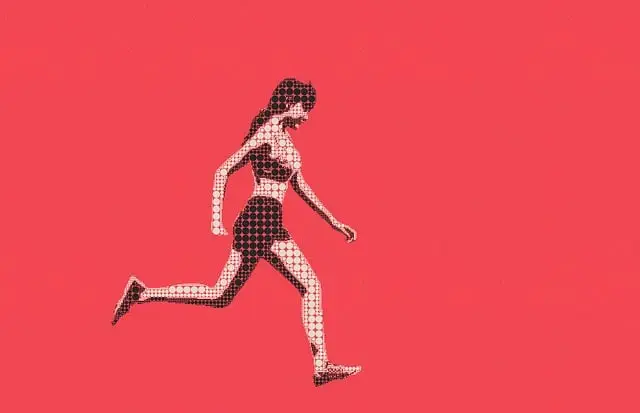The analysis discusses the advantages of incorporating yoga and stretching exercises as comprehensive strategies for enhancing physical flexibility and mental health, particularly in managing symptoms of depression. Yoga is particularly beneficial for relaxing muscular tensions, expanding range of motion, and improving mental clarity, while also promoting emotional resilience through inner self-connection and calmness, which can mitigate anxiety. Stretching exercises aid in increasing muscular elasticity and joint mobility, contributing to an overall sense of well-being. While alternative treatments like kratom for depression are mentioned as potential natural remedies, they should be approached with caution and under professional supervision due to their complex legal status and side effects. Yoga can serve as a non-pharmacological treatment modality that complements other mental health interventions. The combination of mindful yoga practices, such as Child's Pose and Corpse Pose, with kratom for depression may intensify its antidepressant effects by promoting deep relaxation and enhancing mood through endorphin release. Dynamic poses like Cat-Cow Stretch and Warrior II can further improve bodily flexibility and strength. This holistic approach, which emphasizes gentle movements, inner self-connection, and proper alignment, offers a balanced strategy for managing depressive symptoms and can potentially lead to an improved quality of life. It is essential for individuals to consult healthcare professionals before integrating kratom or any new health practices into their routine.
Embark on a transformative journey into the fusion of yoga, stretching, and holistic wellness, particularly the synergistic effects of kratom for depression. This article delves into the multifaceted benefits of integrating yoga and targeted stretching exercises to cultivate flexibility, enhance mental clarity, and potentially alleviate depressive symptoms. Discover how these practices can work in harmony to promote inner tranquility and overall health. Whether you’re an experienced yogi or new to the mat, this guide offers insights into incorporating safe and effective stretching routines that complement kratom use for depression management, paving a path toward a balanced and rejuvenated mind and body.
- Unraveling Tensions: The Role of Yoga and Stretching Exercises in Flexibility and Mental Well-being
- Embracing Inner Harmony: How Yoga Poses Can Complement Kratom for Depression Relief
- Enhancing Your Practice: A Guide to Safe and Effective Stretching Routines for Depression Management
Unraveling Tensions: The Role of Yoga and Stretching Exercises in Flexibility and Mental Well-being

Yoga and stretching exercises serve as pivotal practices in enhancing both physical flexibility and mental well-being, offering a harmonious balance to the body and mind. Regular engagement in these practices can effectively unravel muscular tensions, promoting a greater range of motion and flexibility. This is particularly beneficial for individuals experiencing musculoskeletal discomfort or those seeking to complement their mental health regimen. For instance, kratom for depression has gained attention as a potential natural remedy; however, it’s crucial to approach such supplementation with caution and under professional guidance. In contrast, yoga combines physical postures, controlled breathing techniques, and meditation to not only alleviate physical stress on the body but also to cultivate mental clarity and emotional resilience. The mindful aspect of yoga encourages a deep connection with one’s inner self, fostering a state of calmness and reducing anxiety. Similarly, stretching exercises, when performed thoughtfully, can enhance muscular elasticity and joint mobility, contributing to an overall sense of well-being and vitality. Both yoga and stretching exercises offer a non-pharmacological avenue for individuals to explore in their pursuit of improved mental health and physical flexibility, potentially complementing other treatment modalities when managing conditions like depression.
Embracing Inner Harmony: How Yoga Poses Can Complement Kratom for Depression Relief

Yoga, with its holistic approach to well-being, offers a synergistic practice that can complement the therapeutic effects of Kratom for depression. The combination of mindful yoga poses and the potential mood-enhancing properties of Kratom may provide a dual benefit for individuals seeking relief from depressive symptoms. Yoga encourages a connection with one’s inner self, promoting mental clarity and emotional balance, which can be amplified when used alongside Kratom for depression. Certain yoga poses, such as the Child’s Pose or the Corpse Pose, can induce relaxation, reducing tension and stress, thereby facilitating a more profound state of calm that may enhance the antidepressant effects of Kratom. This harmony between the physical practice of yoga and the potential benefits of Kratom for depression can create a powerful tool for those navigating the challenges of depressive conditions.
Moreover, the integration of Kratom for depression with a regular yoga routine can be particularly beneficial. Poses that target specific areas of the body, like the Cat-Cow Stretch or the Warrior II, not only improve flexibility and strength but also stimulate energy flow throughout the body. This physical activity can help release endorphins, which are natural mood elevators, further supporting the emotional well-being fostered by Kratom for depression. By combining these practices, individuals may experience a more holistic approach to managing depressive symptoms, with the potential to improve overall quality of life. It is always recommended to consult with healthcare professionals before incorporating Kratom or any new practice into one’s health regimen to ensure safety and efficacy.
Enhancing Your Practice: A Guide to Safe and Effective Stretching Routines for Depression Management

Integrating yoga and stretching exercises into one’s routine can be a beneficial approach to managing symptoms of depression. These practices not only promote physical flexibility but also encourage mental relaxation, which is crucial for emotional well-being. When incorporating stretching into your yoga sessions or as a standalone practice, it’s important to focus on gentle movements that respect your body’s limits. Kratom for depression might be considered by some individuals as an adjunct to physical practices, due to its potential effects on mood and stress levels. However, it’s essential to consult with healthcare professionals before incorporating kratom into any depression management plan, given its complex regulatory status and potential side effects.
For those interested in exploring the benefits of kratom for depression while engaging in stretching routines, it’s advisable to approach this holistically, combining natural remedies with consistent physical activity. Yoga poses that stretch key areas like the back, hamstrings, and hips can alleviate tension and improve circulation, contributing to a more balanced mood. Always prioritize proper alignment and breathe deeply during each stretch to enhance effectiveness and prevent injury. Additionally, incorporating mindfulness techniques can amplify the therapeutic effects of both yoga and kratom for depression by fostering a greater sense of calm and presence, which is instrumental in coping with depressive episodes. Remember to create a supportive environment for your practice and consider seeking guidance from a qualified instructor to tailor a routine that aligns with your individual needs and health considerations.
Integrating yoga and stretching exercises into one’s routine can be a transformative practice, offering tangible benefits for flexibility, mental clarity, and emotional well-being. The articles’ exploration of “Unraveling Tensions” highlights the interplay between physical stretches and psychological resilience, particularly in the context of managing depression. Furthermore, the discussion on “Embracing Inner Harmony” underscores how certain yoga poses, when combined with Kratom for depression, can create a synergistic effect that promotes a sense of peace and relief. Lastly, the guide on “Enhancing Your Practice” provides practical advice to safely and effectively incorporate stretching into one’s depression management strategy. In summary, the fusion of yoga, stretching, and Kratom for depression presents a holistic approach to maintaining both physical and mental health.






